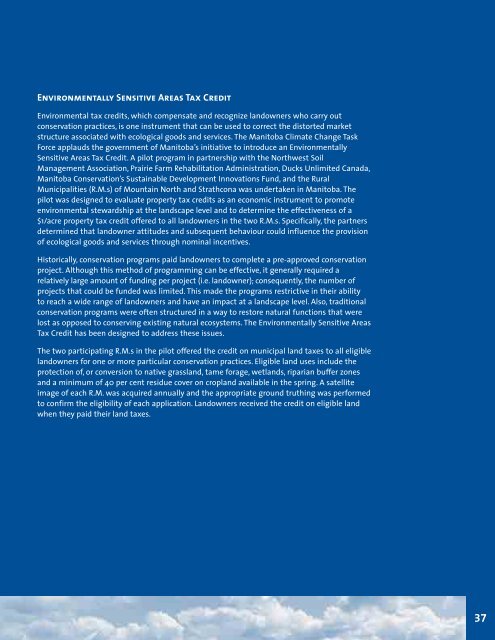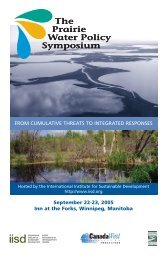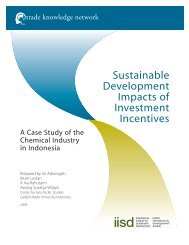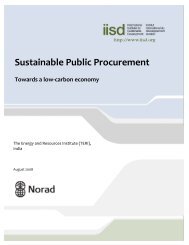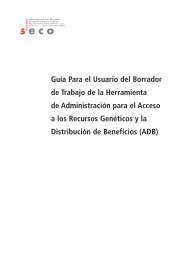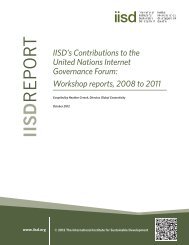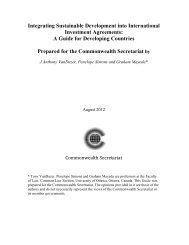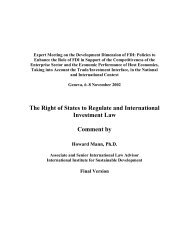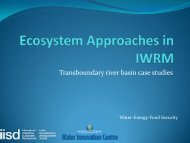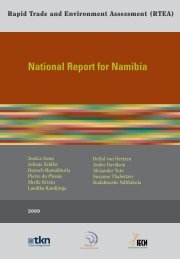Manitoba Climate Change Task Force - International Institute for ...
Manitoba Climate Change Task Force - International Institute for ...
Manitoba Climate Change Task Force - International Institute for ...
Create successful ePaper yourself
Turn your PDF publications into a flip-book with our unique Google optimized e-Paper software.
Environmentally Sensitive Areas Tax Credit<br />
Environmental tax credits, which compensate and recognize landowners who carry out<br />
conservation practices, is one instrument that can be used to correct the distorted market<br />
structure associated with ecological goods and services. The <strong>Manitoba</strong> <strong>Climate</strong> <strong>Change</strong> <strong>Task</strong><br />
<strong>Force</strong> applauds the government of <strong>Manitoba</strong>’s initiative to introduce an Environmentally<br />
Sensitive Areas Tax Credit. A pilot program in partnership with the Northwest Soil<br />
Management Association, Prairie Farm Rehabilitation Administration, Ducks Unlimited Canada,<br />
<strong>Manitoba</strong> Conservation’s Sustainable Development Innovations Fund, and the Rural<br />
Municipalities (R.M.s) of Mountain North and Strathcona was undertaken in <strong>Manitoba</strong>. The<br />
pilot was designed to evaluate property tax credits as an economic instrument to promote<br />
environmental stewardship at the landscape level and to determine the effectiveness of a<br />
$1/acre property tax credit offered to all landowners in the two R.M.s. Specifically, the partners<br />
determined that landowner attitudes and subsequent behaviour could influence the provision<br />
of ecological goods and services through nominal incentives.<br />
Historically, conservation programs paid landowners to complete a pre-approved conservation<br />
project. Although this method of programming can be effective, it generally required a<br />
relatively large amount of funding per project (i.e. landowner); consequently, the number of<br />
projects that could be funded was limited. This made the programs restrictive in their ability<br />
to reach a wide range of landowners and have an impact at a landscape level. Also, traditional<br />
conservation programs were often structured in a way to restore natural functions that were<br />
lost as opposed to conserving existing natural ecosystems. The Environmentally Sensitive Areas<br />
Tax Credit has been designed to address these issues.<br />
The two participating R.M.s in the pilot offered the credit on municipal land taxes to all eligible<br />
landowners <strong>for</strong> one or more particular conservation practices. Eligible land uses include the<br />
protection of, or conversion to native grassland, tame <strong>for</strong>age, wetlands, riparian buffer zones<br />
and a minimum of 40 per cent residue cover on cropland available in the spring. A satellite<br />
image of each R.M. was acquired annually and the appropriate ground truthing was per<strong>for</strong>med<br />
to confirm the eligibility of each application. Landowners received the credit on eligible land<br />
when they paid their land taxes.<br />
37


